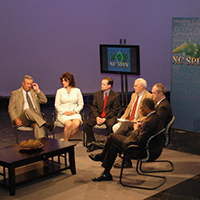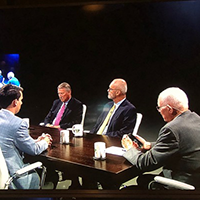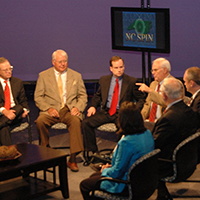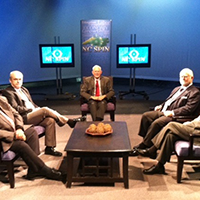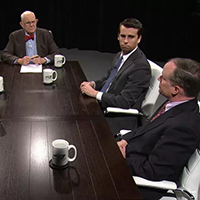A ‘ruthless takedown of academia’
Published February 13, 2025
By Holden Thorp
EDITOR’S NOTE: Former UNC Chapel Hill Chancellor Holden Thorp is now Editor-in-Chief of the Science Family of Journals. He posted this yesterday.
WASHINGTON (February 11, 2025) – Late last week, the Trump administration set off a frenzy in the US scientific community when the National Institutes of Health (NIH) announced that indirect cost reimbursement for federally funded research would be capped at 15%, a drastic cut from a usual range of 50 to 70%.
In the American system, a federal research grant comes with one component that pays the direct costs of research—covering salaries of the researchers and supplies and equipment they use—and a so-called indirect component that represents the government’s contribution to facilities and administration—the overhead necessary to do the work.
The indirect contribution does not cover everything needed to support the research; the remainder is provided by the university. This agreement between higher education and the government has been a hallmark of the funding system for 70 years. The scientific community must unite in speaking out against this betrayal of a partnership that has enabled American innovation and progress.
In rough terms, for every dollar spent on the planning and execution of research, another dollar is needed for not only the laboratory facility costs but also the support staff (including not just financial administrators but also people who handle radiation and chemical safety) and systems to administer the grants and ensure that the research follows government guidelines and expenditures are accounted for. The support staff has grown over the years, but that is because the government has increased the number and complexity of requirements that ensure that the money is properly spent.
The cost of overhead has typically been split about equally between the government and the institutions. Thus, if the indirect rate was 50%, then for every dollar of direct research expense, an additional 50 cents in indirect support would come from the government and 50 cents from the institution.
Lowering the indirect rate to 15% would cut the overall federal support budget by 35 percentage points, leaving the university to cover the rest. For example, if an institution has $200 million in NIH support for direct costs, then at a 50% indirect cost rate, the indirect support from the government and the institution would each be $100 million. Thus, the total federal funding would be $300 million.
Abruptly cutting the indirect rate to 15% would decrease the government’s contribution to support costs to $30 million. That’s a removal of $70 million from the total federal investment.
Such an unforeseen and immediate hit to the budget doesn’t leave the institutions with many options to make up the difference. They likely will have to cut other academic programs as well as raise revenue by increasing tuition (and/or) fees and squeezing philanthropy for more donations.
These two sources are unlikely to provide enough to fill the hole quickly, if at all. And it will be difficult to lose support staff while remaining in compliance with federal regulations. Violations can lead to sanctions that could further endanger federal funds or at least lead to public shaming. Perhaps, universities will have to walk away from federally funded programs altogether to lower the administrative burden.
Either way, these cuts to federal funding threaten to cause enormous economic damage as well, especially in the states where these universities are located. In many states, including Alabama, Pennsylvania, and Missouri, an academic medical research center is the largest employer.
It is a misnomer to call these funds indirect costs. They are essential to the safe and ethical performance of research. The environment in which research is conducted is highly specialized and costly.
The government’s share is not a give-away. Rather, it is an investment in the research infrastructure of the country. That partnership is now being broken and will lead to a further erosion in American leadership in science and technology at the very time it is needed most to compete worldwide.
These cuts should be a rallying cry for higher education to come together to make the case for the American system of research and teaching. Leaders have an opportunity to step forward and marshal their campuses in the effort. Conflicts between faculty and administrators, no matter how justifiable, should be set aside to focus attention on this ruthless takedown of academia. All disciplines will be affected by these cuts, not just science.
This is a moment to unite.


